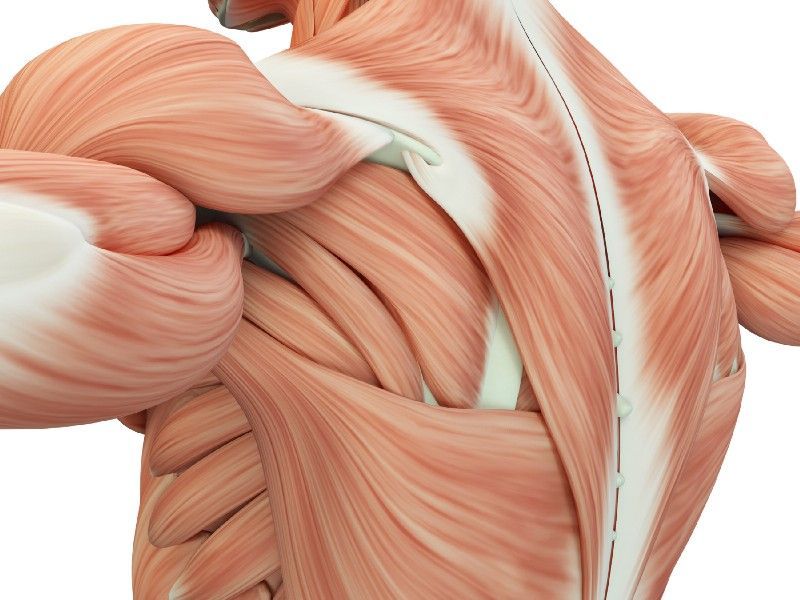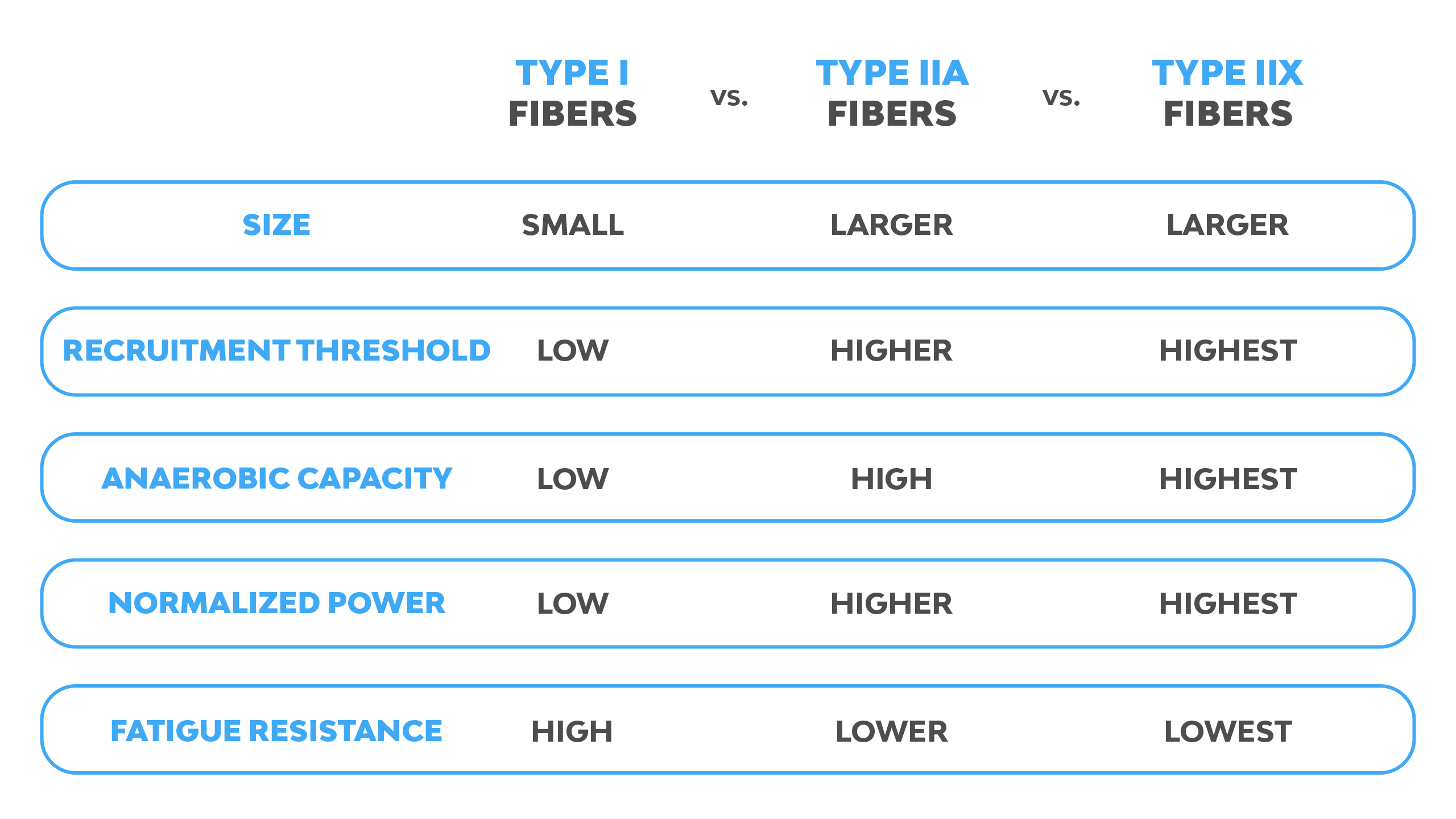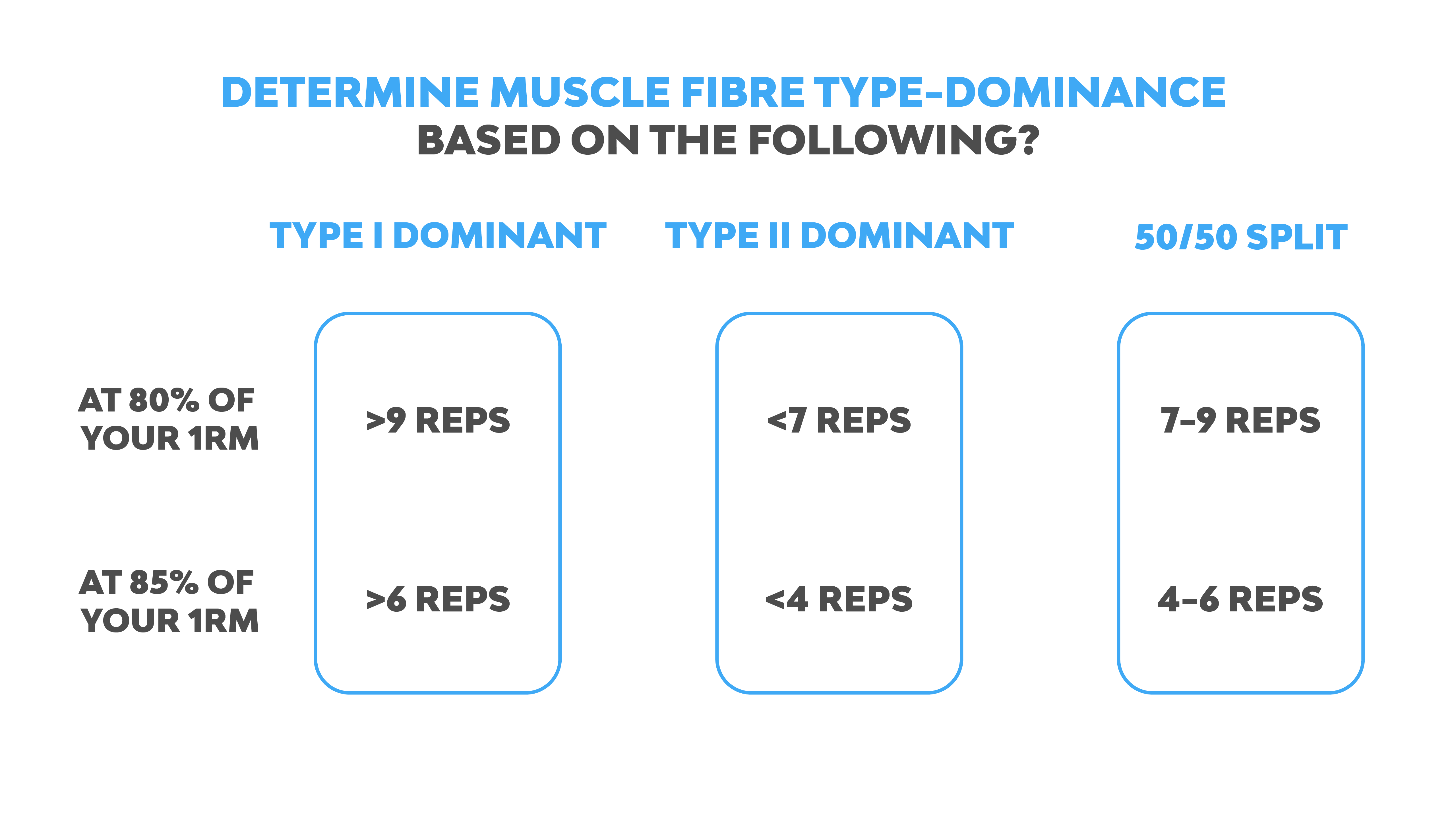How your different muscle fibre types affect muscle development
If you’re into lifting, you’ve probably heard that you should train various muscles differently based on its predominant muscle fiber type. Is it true ? Find out

If you’re into lifting, you’ve probably heard
You should train various muscles differently based on its predominant muscle fiber type.For example, hamstrings should be trained with heavy weights and low reps because they’re 70% fast twitch, while the shoulders should be hit with low weights and high reps as they’re mostly slow twitch.
Should you, though?
Slow Twitch, Fast Twitch
Let’s start with a primer on muscle fiber types. It’ll be quick and painless, I promise!

In humans, there are two basic types of muscle fibers:
- Type I muscle fibers (Slow Twitch)
- Generally smaller
- More fatigue-resistant
- Type II muscle fibers (Fast Twitch)
- Usually larger
- Less fatigue-resistant
Fast twitch fibers can be further classified into type IIa and type IIx fibers.
Type IIx fibers excel at producing quick, powerful bursts of speed and are more explosive than type IIa muscle fibers. However, as the proportion of type IIx fibers is very tiny — even for highly trained athletes — you can assume that I’m referring to type IIa fibers when I mention fast twitch fibers.
The amount of force needed to be produced determines the activation of muscle fibers: slow twitch fibers are recruited by the nervous system first till they are overwhelmed. Then, fast twitch fibers are called upon for further force generation.
As we can see, the proposal that fast twitch fibers will experience higher degrees of growth with high-load resistance, and that slow twitch muscles will grow more with low-load resistance training is starting to make physiological sense.
The Case Against Fiber Type-Specific Growth
But there are three fundamental problems with this idea:
1. Most muscles have a 50/50 split of type I and type II muscle fibers
If you’re going to train your hamstrings differently from your shoulders, it’s probably helpful to be sure they actually have different predominant muscle fibers.
Well, I have some bad news for the dude who told me he was hitting his chest with the heaviest dumbbells he could find because “chest is predominantly fast twitch fibers.”
On average, type I and type II muscle fibers tend to be pretty evenly distributed in most muscles.
But wait — what about the calves? There’s no way they have an equal distribution of fibers, right?
There are a few exceptions, of course — the calves happen to be one of them. It is roughly 80% slow twitch. However, the main point is that most of the major muscles you’d want to train for growth have a pretty even split.
2. There’s no easy way to know your fiber type breakdown
Sure, most people might have 50/50 muscle fiber distribution. But the variability between individuals and muscles means your fiber split could differ from the average person, right?
Unfortunately, there’s no easy way to find out for sure (unless you spend a fortune to get your muscles biopsied).
Numerous bodybuilding forums and sites claim that you can determine your muscle fiber type-dominance based on the number of reps you can perform at a given percentage of your 1 RM (One Rep Max).

But the following points explain why this approach is problematic.
1. The exercise itself influences how quickly you fatigue.
10 reps of knee extensions versus 10 reps of deadlifts: we all know which is more tiring.
2. Your familiarity with the exercise determines how quickly you fatigue.
If you’re unfamiliar with hip thrusts, your 1 RM is probably depressed in comparison to your true potential. This is the main reason why some new lifters can get more than 10 reps in at 90% of their 1 RM, while more experienced lifters can only grind out 3 to 5 reps.
3. Fiber type breakdown does not predict how many reps you can get with a percentage of your 1 RM.
A study performed in 2008 did not find a significant correlation between muscle fiber type composition and the number of repetitions performed at a percentage of 1 RM.
4. No conclusive findings on slow and fast twitch fibers’ responsiveness
Here comes the real kicker: there’s just not enough evidence that training in specific ways will lead to preferential growth of type I or type II muscle fibers.
While there are available studies that demonstrate that heavy training caused more type II fiber growth and that low load training caused more type I fiber growth, there have been many other studies that show mixed results.
Additionally, it has been shown that heavy training and light training both caused similar amounts of slow twitch fiber hypertrophy, and that fast twitch fibers have been shown to grow just as well when subjected to lighter training.
The overall picture is a murky one.

50 Reps For Delts — Yes Or No?
At the end of the day, it seems that all rep ranges and loads result in pretty similar amounts of muscle growth on their own and that a variety of rep ranges and training loads causes more hypertrophy than just sticking with one.
Ultimately, you shouldn’t change how you approach training based on a muscle’s fiber type composition.
Consistent, progressive overload is still the best way to build muscle.
Ensure that you’re tracking your progress in the gym with GymStreak: its clean and easy-to-use interface allows you to log all your lifting statistics, and performs live volume calculations for you in your active session.
GymStreak’s AI-powered personal trainer will push you harder every week and ensure that you’re building muscle and gaining strength in the most efficient way possible.
Receive your very own personalized workout plan by downloading GymStreak now!
References
Campos, G. E. R., Luecke, T. J., Wendeln, H. K., Toma, K., Hagerman, F. C., Murray, T. F., … Staron, R. S. (2002). Muscular adaptations in response to three different resistance-training regimens: specificity of repetition maximum training zones. European Journal of Applied Physiology, 88(1–2), 50–60. https://doi.org/10.1007/s00421-002-0681-6
Mitchell, C. J., Churchward-Venne, T. A., West, D. W. D., Burd, N. A., Breen, L., Baker, S. K., & Phillips, S. M. (2012). Resistance exercise load does not determine training-mediated hypertrophic gains in young men. Journal of Applied Physiology, 113(1), 71–77. https://doi.org/10.1152/japplphysiol.00307.2012
Morton, R. W., Oikawa, S. Y., Wavell, C. G., Mazara, N., McGlory, C., Quadrilatero, J., … Phillips, S. M. (2016). Neither load nor systemic hormones determine resistance training-mediated hypertrophy or strength gains in resistance-trained young men. Journal of Applied Physiology, 121(1), 129–138. https://doi.org/10.1152/japplphysiol.00154.2016
Netreba, A. I., Popov, D. V., Liubaeva, E. V., Bravyĭ, I. R., Prostova, A. B., Lemesheva, I. S., & Vinogradova, O. L. (2007). [Physiological effects of using the low intensity strength training without relaxation in single-joint and multi-joint movements]. Rossiiskii Fiziologicheskii Zhurnal Imeni I.M. Sechenova, 93(1), 27–38.
Terzis, G., Spengos, K., Manta, P., Sarris, N., & Georgiadis, G. (2008). Fiber Type Composition and Capillary Density in Relation to Submaximal Number of Repetitions in Resistance Exercise. The Journal of Strength & Conditioning Research, 22(3), 845. https://doi.org/10.1519/JSC.0b013e31816a5ee4
